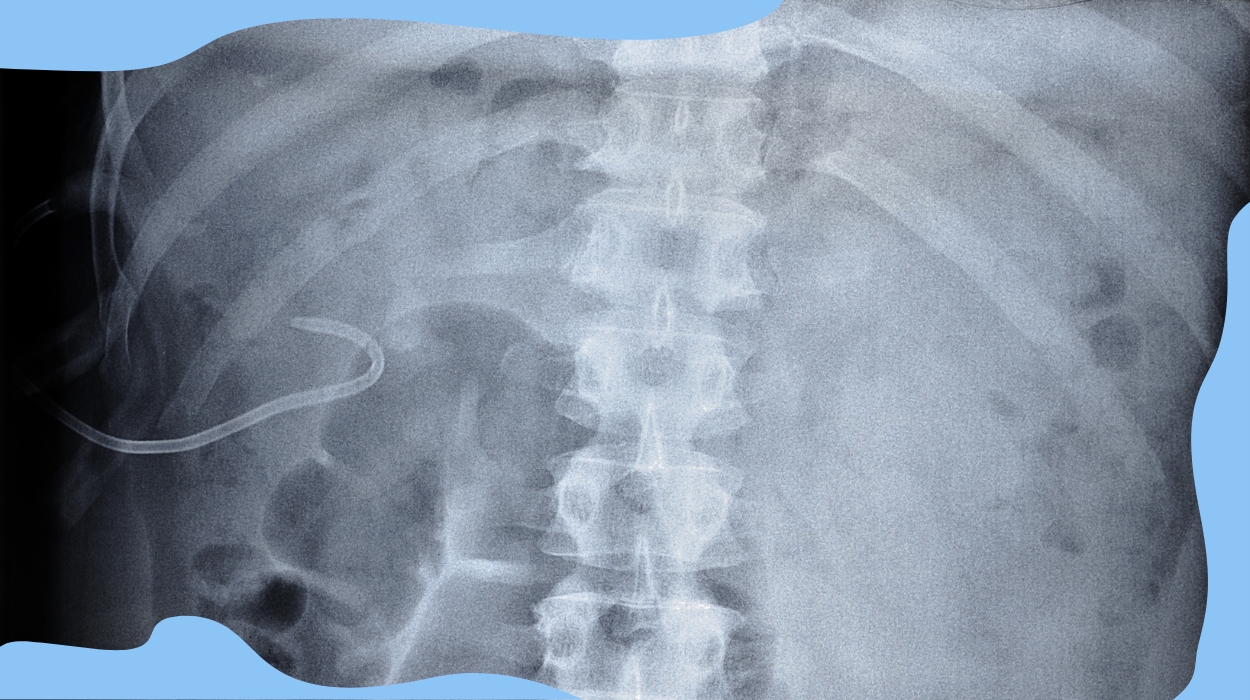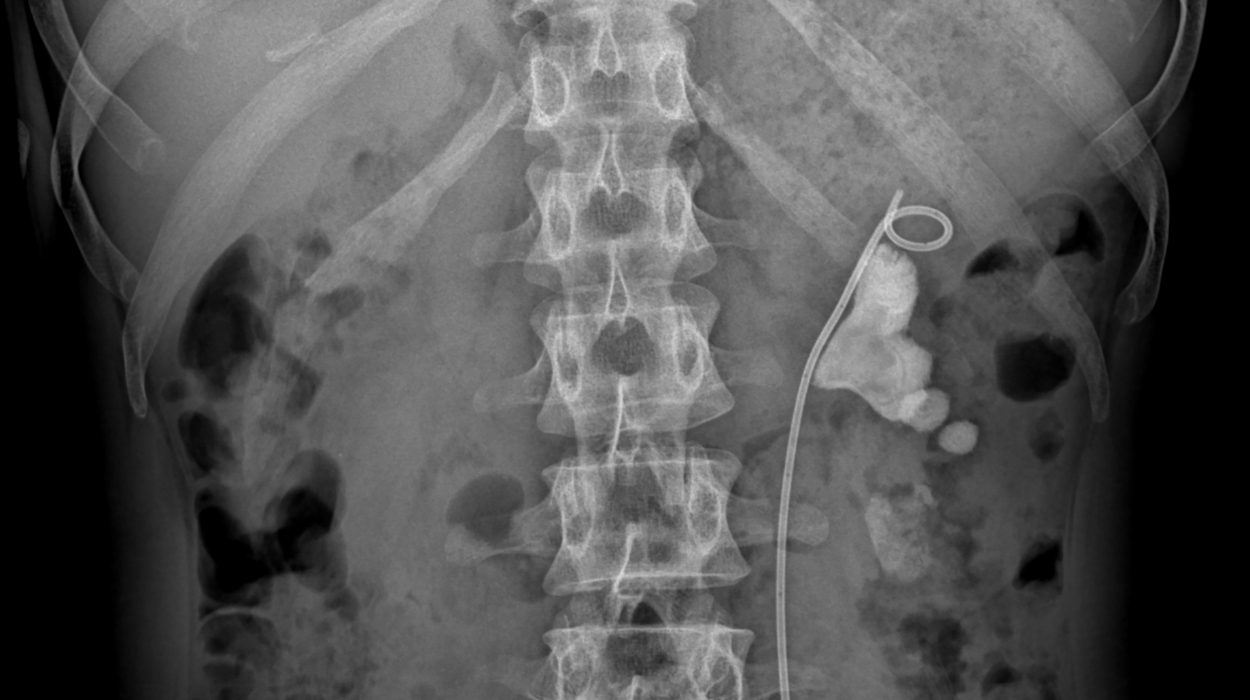 Evidence Based
Evidence Based
Evidence Based
This article is objectively based on relevant scientific literature, written by experienced medical writers, and fact-checked by a team of degreed medical experts.
Our team of registered dietitian nutritionists and licensed medical professionals seek to remain objective and unbiased while preserving the integrity of any scientific debate.
The articles contain evidence-based references from approved scientific sites. The numbers* in parentheses (*1,2,3) will take you to clickable links to our reputable sources.
Kidney Stone Surgery Stent 2024: What To Expect + 5 Care Tips

Your urinary tract starts with the kidneys, which filter waste from the blood and produce urine. The urine then passes through narrow tubes called ureters, which connect the kidneys to the bladder, where the urine is stored until you have enough to warrant a trip to the bathroom. The urethra then carries urine out of the body.
Ureters can become blocked for many reasons, most commonly from kidney stones or after kidney stone removal.
A kidney stone surgery stent is a routine treatment to prevent ureters from closing or becoming blocked after some kidney stone treatments, and can also alleviate a urinary tract that has become blocked due to other reasons.
If you need a ureteral stent, it’s good to know what to expect and how to stay comfortable while your stent is in place.
Kidney Stone Surgery Stent
- Kidney stone stent surgery can help treat or prevent blockages in the ureters and allow urine to pass from the kidneys to the bladder. They are routinely placed[1] after kidney stone removal procedures to prevent the ureter from closing.
- While a ureteral stent prevents severe complications from blocked ureters, they can cause pain, bladder spasms, blood in the urine, and other types of discomfort.
- Over-the-counter pain medications, drinking enough (but not too much) water, and avoiding bladder irritants can make things more comfortable until stent removal at a follow-up appointment.
Kidney Stone Surgery Stent: What To Expect

Ureteral Stents Are Not One-Size-Fits-All
There is a wide range[2] of shapes, materials, and configurations for ureteral stents, each of which comes with their own pros and cons. Your healthcare provider will determine which stent will work best for you.
Most ureteral stents are only in place for a few days to several weeks. For temporary stents like these, you may have a thin string that runs through the urethra and outside the body to allow for easier removal.
If your stent will be in place for a longer time period, it may not have a string.
Regardless of which type is right for you, once your stent is in place, it may cause discomfort as well as other side effects.
Stent Pain Is Very Common
While part of the goal of kidney stone removal is to help minimize severe flank pain from passing a kidney stone, a ureteral stent can also be incredibly uncomfortable. As many as eight out of ten people[3] experience lower abdominal pain and cramping after urination, painful urination, and other symptoms.
Pain and cramping in the lower abdomen after urination are some of the most common side effects of a ureteral stent. This is typically the result of the walls of the urinary bladder coming into contact with the stent. While it’s very uncomfortable, it’s not unexpected or abnormal.
Ureteral Stents May Increase Certain Infection Risks
Like any foreign object, the surface of a stent can allow a buildup of abnormal bacteria and lead to increased risks for urinary tract infection in some patients.
Your infection risks[4] may be higher depending on how long the stent remains in place, how old you are, and other specific health factors. With today’s advanced materials, bacterial buildup on ureteral stents is much lower than in the past.
Although apple cider vinegar has been shown to kill bacteria[5] associated with UTIs, its effect on urine acidity can cause bladder irritation if you currently have a stent. However, after your stent is removed, you can incorporate apple cider vinegar into your routine with tasty gummies, and be sure to drink plenty of water!
You May See Blood In Your Urine
As disconcerting as it can be, it’s normal to see a slight amount of blood and even a few small clots in the urine in the first few days after your procedure.
You may continue to see traces of blood in the urine throughout the time your stent remains in place, as well as after you get your stent removed. However, don’t hesitate to call your doctor if you see a lot of blood or significant blood clots, as these could indicate other problems.
What Is Kidney Stone Stent Surgery?

Very large kidney stones may become stuck and require medical intervention to break them up or physically remove them from the body. However, many of the least invasive kidney stone treatments leave fragments to pass on their own with the potential of creating a blockage.
Other than stones or stone fragments becoming stuck, the ureters may become blocked for several reasons including stricture or stenosis (abnormal narrowing of the ureters), scar tissue, or a tumor pushing against the ureters and closing them.
A ureteral stent can alleviate blocked urinary tract with a small tube placed in the ureter to help urine pass from the kidney to the bladder.
Your doctor may recommend a ureteral stent for several reasons, including:
- As a routine part of a kidney stone removal procedure.
- To relieve urinary retention due to blood clots, tumors or swelling from other surgeries.
- As part of treatment for a ureteral injury.
- To correct other types of problems blocking urine flow.
While ureteral stent placement is considered a minimally invasive procedure, it can cause significant discomfort, so it’s good to know what to expect.
Care Tips For Kidney Stone Surgery With Stent
Take Pain Medication As Recommended
The good news is that most of the pain and discomfort from your kidney stone surgery stent recovery time can be minimized with over-the-counter non-steroidal anti-inflammatory drugs (NSAIDs) and usually don’t require strong narcotic pain medications.
If your pain is very severe and doesn’t respond to recommended medications, talk to your doctor. They may add medications to your regimen that can help decrease spasms in the bladder and ureters as well as enhance the flow of urine, both of which can bring significant relief.
Don’t Go Overboard With Hydration
While the normal advice for coping with kidney stones is to drink plenty of water, your doctor may advise you to take it easy on your bladder while your stent is in place.
Urinary frequency can make symptoms like bladder spasms worse in some cases. Be sure to drink enough water to prevent the urine from becoming too concentrated or risking more kidney stones, but wait until after your stent removal to focus on significantly increasing your water intake.
Control Constipation
Depending on what pain control measures your doctor recommends or what other health issues you may be dealing with, you may experience constipation during the healing process from your kidney stone surgery or stent placement.
Constipation can make ureteral stent pain worse. If you’re constipated from anesthesia or pain medications, ask your doctor if you should take stool softeners or make dietary changes to help regulate your bowels.
Avoid Bladder Irritants
The tissue of your urinary bladder will be irritated while the stent is in place, so be sure to avoid foods and beverages that can add to the problem.
Bladder irritants[6] include:
- Caffeine.
- Acidic foods and drinks like citrus.
- Soda drinks and excess sugar.
- Alcohol.
- Artificial sweeteners.
- Spicy foods.
Know When To Call Your Doctor
Call your doctor or healthcare provider if:
- You have chills or a fever.
- Urinating becomes difficult or you cannot pass urine.
- You experience prolonged nausea and vomiting or can’t drink or keep down fluids.
- Part or all of the stent comes out (not including the string).
- You have severe pain and pain medication isn’t helping.
- You’re leaking urine uncontrollably.
You may need immediate, emergency medical care if you’re having chest pains, shortness of breath, high fever, if you lose consciousness, or if your pain or other symptoms are so severe you can’t wait for your doctor’s normal hours.
Conclusion
If your kidney stone requires surgical removal or you have developed a blockage in the urinary system that’s preventing normal urine flow, your doctor may recommend a ureteral stent.
Although a ureteral stent may be necessary to prevent serious complications from a blocked ureter, it can also be very uncomfortable. Advances in medical materials have vastly improved stents in recent years, but you may still experience significant discomfort.
Ask your doctor about pain management and whether they can help with problems like bladder spasms that can make ureteral stents more uncomfortable.
Fortunately, most ureteral stents are temporary and you should feel much better once your stent is removed.
Frequently Asked Questions
Yes. A nephrostomy tube is an alternative to a ureteral stent. This procedure involves a hollow tube placed through the skin of the back to drain urine directly from the kidney into a bag outside your body. However, this is a much more invasive treatment and is usually only indicated when a stent cannot be placed. Stents are considered the preferred[7] treatment whenever possible.
No. Acidic foods and beverages can be bladder irritants and should be avoided if your stent is bothering you.
No. It is vital that only a healthcare provider removes your stent. Attempting to remove it at home can seriously injure your kidneys, ureters, and bladder, lead to infection, allow the ureter to become blocked again, and end up requiring a visit to the emergency room.
+ 7 sources
Health Canal avoids using tertiary references. We have strict sourcing guidelines and rely on peer-reviewed studies, academic researches from medical associations and institutions. To ensure the accuracy of articles in Health Canal, you can read more about the editorial process here
- Ordonez, M.A., Eu Chang Hwang, Borofsky, M.S., Bakker, C.J., Gandhi, S. and Dahm, P. (2019). Ureteral stent versus no ureteral stent for ureteroscopy in the management of renal and ureteral calculi. [online] 2019(2). doi:https://doi.org/10.1002/14651858.cd012703.pub2.
- Comprehensive overview of ureteral stents based on clinical aspects, material and design. (2023). doi:https://doi.org/10.5173/ceju.2023.218.
- Miyaoka, R. and Monga, M. (2009). Ureteral stent discomfort: Etiology and management. [online] 25(4), pp.455–455. doi:https://doi.org/10.4103/0970-1591.57910.
- Bhojani, N., Rutugandha Paranjpe, Cutone, B. and Eisner, B.H. (2023). Infectious Complications, Healthcare Resource Use, and Medical Costs Associated with Delays in Percutaneous Nephrolithotomy Among Patients with Stone Disease and Ureteral Stent Placement. [online] 37(6), pp.654–659. doi:https://doi.org/10.1089/end.2022.0489.
- Darshna Yagnik, Ward, M. and Shah, A. (2021). Antibacterial apple cider vinegar eradicates methicillin resistant Staphylococcus aureus and resistant Escherichia coli. [online] 11(1). doi:https://doi.org/10.1038/s41598-020-78407-x.
- and, D. (2023). Eating, Diet, & Nutrition for Interstitial Cystitis. [online] National Institute of Diabetes and Digestive and Kidney Diseases. Available at: https://www.niddk.nih.gov/health-information/urologic-diseases/interstitial-cystitis-painful-bladder-syndrome/eating-diet-nutrition.
- Vineet Gauhar, Giacomo Maria Pirola, Scarcella, S., Maria De Angelis, Giulioni, C., Emanuele Rubilotta, Marilena Gubbiotti, Lim, E.-P., Xi, Y., Marcelo Langer Wroclawski, Ho Yee Tiong and Castellani, D. (2022). Nephrostomy tube versus double J ureteral stent in patients with malignant ureteric obstruction. A systematic review and meta-analysis of comparative studies. [online] 48(6), pp.903–914. doi:https://doi.org/10.1590/s1677-5538.ibju.2022.0225.



